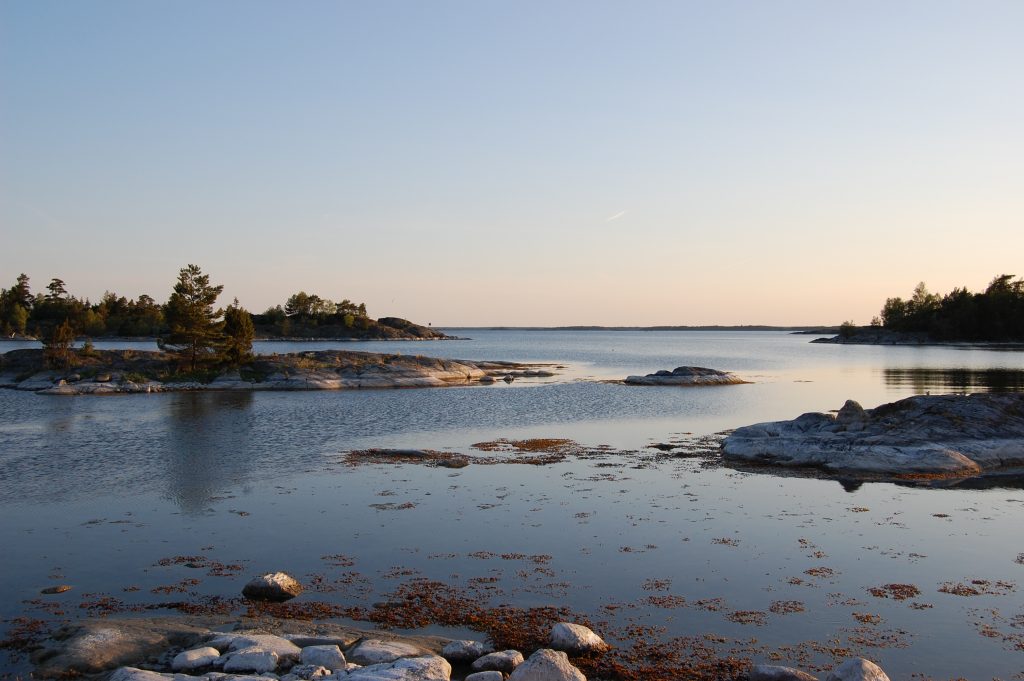The final report of the VALUES project is now available (Nyström Sandman et.al. 2017). VALUES is a part of the research program “the value of ecosystem services”, funded by the Swedish EPA. This is the only project in the program with a marine focus. Through in-depth studies of two separate marine habitats, the VALUES project have shown how ecosystem functions can be mapped, quantified and valued. By relating values and benefits of ecosystem services to human impact on the ecosystems, non-market costs of environmental problems have been assessed.
 Photo: Antonia Nyström Sandman, AquaBiota
Photo: Antonia Nyström Sandman, AquaBiota
In VALUES we studied two different habitats; deep soft sediments and shallow bays and inlets and how they are affected by invasive species and eutrophication. We have shown how environmental problems and their effects on ecosystems influence the production of ecosystem services. The methods and approaches used can be applied in different contexts as well. However, a prerequisite is that it is possible to find quantifications of the relationship between functions and services. Economic valuation is an important tool for understanding the values at stake when comparing different alternatives in decision processes.
Small invaders may cause big trouble
Deep soft sediments cover large parts of the Baltic Sea. The habitat produces several important ecosystem functions, such as decomposition of organic matter and recirculation of nutrients. An invasion of the non-indigenous polychaete genus Marenzelleria have influenced these processes.
- Marenzelleria was first observed in the Baltic in 1985, most likely introduced by ballast water.
- The worms are tiny, but make deeper sediment burrows than the native species.
- There is approximately 39 000 metric tons of Marenzelleria in the Baltic.
- Marenzelleria is estimated to increase recirculation of phosphorus from the sediments with 2–4 %.
- This increases the cost to reach internationally set targets on phosphorus reduction by 16–71 % over the coming 60 years.
Coastal fish is affected by eutrophication
Shallow inlets and bays are important habitats for coastal fish. Many areas are also strongly affected by eutrophication, which decreases water transparency and changes vegetation composition, which in turn influences the abundance of fish.
- The revenues from recreational fisheries is calculated in billion SEK.
- The availability of qualitative habitat directly influences the abundance of large predatory fish in an area.
- Increased emissions of phosphorus have had a negative effect on perch catches.
- If phosphorus emissions were reduced by 40 %, the catch value of perch would increase by 72 MSEK per year.
- The perch is favoured by increased visibility, while it is a disadvantage for pikeperch. An improvement of the Secchi depth by 11 % would increase the perch stock by 20 % and pikeperch about as much. However, as perch is a lot more common than pikeperch, in absolute numbers perch will increase more than pikeperch will decrease.
Fish production is only one service generated by shallow bays and inlets. They are habitat for many species, and are of great importance for the ecosystems of the Baltic.
Reference: Nyström Sandman. A., Bergström, U., Gren, I.-M., Sundblad, G., Tafesse Tirkaso, W. & Wikström, S. 2017: VALUES – Värdering av akvatiska livsmiljöers ekosystemtjänster, Naturvårdsverkets rapport 6752, februari 2017 (Swedish only)